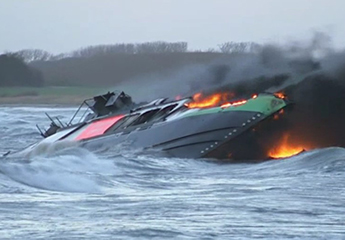The Umoe Ventus accident was a clear example of the fire risks related to the lightweight composite vessels of the future. The purpose of this project is to rethink and strengthen fire-fighting on board especially-exposed FRP vessels, by developing new guidelines for fire prevention, based on experience from the Umoe Ventus accident.
In view of the greater use of composite materials in the maritime sector, this project will support innovative technological development by creating customised guidelines for FRP vessels. Emergency procedures must also be analysed by taking a new, human-centred approach.
An inadequate and maladjusted fire strategy can contribute to exacerbating fires, as was the case with the Umoe Ventus accident. With the development of new fire strategies for FRP vessels, DBI will contribute to strengthening fire safety on the composite vessels of the future, to create better-organised emergency procedures for crews.
The aim of this project is to develop new guidelines to support the development of new rules under IMO auspices for the fire protection of FRP vessels.
Partners:
- OSK Ship-tech A/S
The project is supported by the Danish Maritime Fund.
project report |
|
New Fire Strategies in the Wake of UMOE VENTUS |
|
Annex A – Background study |
|
Annex B – Internal workshop |
|
Annex C – Human Factors |
|
Annex D – Technical analysis |
|
Annex E – Failure Mode and Effect Analysis for fire safety as a system |

